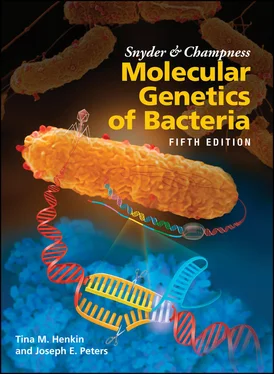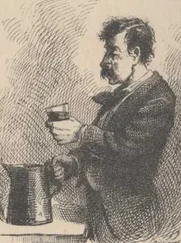In a translational fusion, the reporter gene lacks both a promoter and a TIR and its coding sequence is fused immediately downstream of the TIR of the gene under investigation; it is crucial that the two coding sequences are fused in such a way that they are translated in the same reading frame and there are no termination codons between them. Translation beginning at the TIR of the upstream coding sequence will proceed through the reporter gene coding sequence, resulting in a fusion proteinthat contains both polypeptide sequences. The reporter gene product can then be assayed as before to determine how much of the fusion protein has been made. The reporter gene product must retain its activity even when fused to the potential polypeptide encoded by the upstream ORF; otherwise, it will not be detectable. Many reporter genes have been chosen because their products remain active when fused to other polypeptides. Translational fusions are also often used to attach affinity tags to proteins to use in their purification.
1 RNA is a polymer made up of a chain of ribonucleotides. The bases of the nucleotides—adenine, cytosine, uracil, and guanine—are atiached to the five-carbon sugar ribose. Phosphate bonds connect the sugars to make the RNA chain, attaching the third (3′) carbon of one sugar to the fifth (5′) carbon of the next sugar. The 5′ end of the RNA is the nucleotide that has a free phosphate attached to the 5′ carbon of its sugar. The 3′ end has a free hydroxyl group at the 3′ carbon, with no phosphate attached. RNA is both made and translated from the 5′ end to the 3′ end.
2 After they are synthesized, RNAs can undergo extensive processing and modification. Processing occurs when phosphate bonds are broken or new phosphate bonds are formed. Modification occurs when the bases or the sugars of the RNA are chemically altered, for example, by methylation. In bacteria, rRNAs and tRNAs, but not mRNAs, are extensively modified.
3 The primary structure of an RNA is its sequence of nucleotides. The secondary structure is formed by hydrogen bonding between bases in the same RNA to give localized doublestranded regions. The tertiary structure is the three-dimensional shape of the RNA due to the stiffness of the double-stranded regions of the secondary structure. All RNAs, including mRNA, rRNA, and tRNA, probably have secondary and tertiary structures.
4 The enzyme responsible for making RNA is called RNA polymerase. One of the largest enzymes in the cell, the bacterial RNA polymerase core enzyme has five subunits plus another detachable subunit, the σ factor, which comes off after the initiation of transcription. The ω subunit helps in its assembly. The core enzyme is active in transcription elongation but requires addition of σ to form the holoenzyme to initiate transcription.
5 Transcription begins at well-defined sites on DNA called promoters. The type of promoter used depends on the type of σ factor bound to the RNA polymerase.
6 Transcription stops at sequences in the DNA called transcription terminators, which can be either factor dependent or factor independent. The factor-independent terminators have a string of A’s (transcribed as U’s in the RNA) that follows a sequence that forms an inverted repeat. The RNA transcribed from that region folds back on itself to form a stem-loop, or hairpin, which causes the RNA molecule to fall off the DNA template. The factor-dependent terminators do not have a well-defined sequence. The ρ protein is the best-characterized termination factor in E. coli. It forms a ring that binds to and encircles the RNA, moving toward the RNA polymerase. If the RNA polymerase pauses at a ρ termination site, the ρ factor catches up to it and causes it to dissociate from the DNA and release the RNA product.
7 Most of the RNA in the cell falls into three classes: messenger (mRNA), ribosomal (rRNA), and transfer (tRNA). mRNA is very unstable, existing for only a few minutes before being degraded. rRNAs in bacteria are further divided into three types: 16S, 23S, and 5S. Both rRNA and tRNA are very stable and account for about 95% of the total RNA. Other RNAs include the primers for DNA replication and small RNAs involved in regulation or RNA processing.
8 Ribosomes, the site of protein synthesis, are made up of two subunits, the 30S subunit and the 50S subunit, which contain the rRNAs as well as approximately 50 proteins. The 16S rRNA is in the 30S subunit, while the 23S and 5S rRNAs are in the 50S subunit.
9 Polypeptides are chains of the 20 amino acids that are held together by peptide bonds between the amino group of one amino acid and the carboxyl group of another. The amino terminus (N terminus) of the polypeptide has the amino acid with an unattached amino group. The carboxy terminus (C terminus) of a polypeptide has the amino acid with a free carboxyl group.
10 Translation is the synthesis of polypeptides, using the information in mRNA to direct the sequence of amino acids. During translation, the mRNA moves in the 5′-to-3′ direction along the ribosome 3 nucleotides at a time. Three reading frames are possible, depending on how the ribosome is positioned at each triplet.
11 The genetic code is the assignment of each possible 3-nucleotide codon sequence in mRNA to 1 of 20 amino acids. The code is redundant, with more than one codon sometimes encoding the same amino acid. Because of wobble, the first position of the tRNA anticodon (written 5′ to 3′) does not have to behave by the standard base-pairing complementarity to the third position of the antiparallel codon sequence, and other pairings are possible.
12 Initiation of translation occurs at TIRs on the mRNA that consist of an initiation codon, usually AUG or GUG, and often an S-D sequence, a short sequence that is complementary to part of the 16S rRNA and precedes the initiation codon.
13 In bacteria, the first tRNA to enter the ribosome is a special methionyl-tRNA called fMet-tRNAfMet, which carries the amino acid formylmethionine. After the polypeptide has been synthesized, the formyl group and often the first methionine are removed.
14 Translation termination occurs when one of the termination or nonsense codons, UAA, UAG, or UGA, is encountered as the ribosome moves down the mRNA. Proteins called release factors are also required for release of the polypeptide.
15 The primary structure of a polypeptide is the sequence of amino acids in the polypeptide. Proteins can be made up of more than one polypeptide chain, which can be the same as or different from each other. The secondary structure results from hydrogen bonding of the amino acids to form α-helical regions and β-sheets. Tertiary structure refers to how the chains fold up on themselves, and quaternary structure refers to one or more different polypeptide chains folding up on each other.
16 Proteins that help other proteins fold are called chaperones. The most ubiquitous chaperones are the Hsp70 chaperones, called DnaK in E. coli, which are very similar in all types of cells from bacteria to humans. These chaperones bind to the hydrophobic regions of proteins and prevent them from associating prematurely. They are aided by their smaller cochaperones, DnaJ and GrpE, which help in binding to proteins and cycling ADP off the chaperone, respectively. Other proteins, called Hsp60 chaperonins, also help proteins fold, but by a very different mechanism. One chaperonin, called GroEL in E. coli, forms large cylindrical structures with internal chambers that take up unfolded proteins and help them refold properly. A cochaperonin called GroES forms a cap on the cylinder after the unfolded protein is taken up. Chaperonins like GroEL are found in bacteria and in the organelles of eukaryotes and are called group I chaperonins. Another type, group II chaperonins, is found in the cytoplasm of eukaryotes and in archaea. They have a similar structure but a very different amino acid sequence.
Читать дальше











